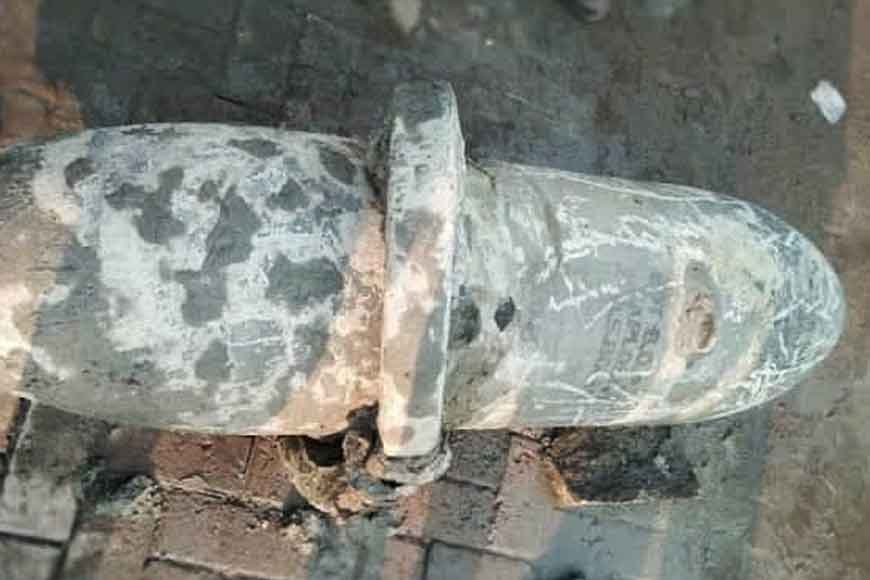World War II bomb discovered during dredging at Kolkata port!

Imagine a World War II bomb still lying for decades under a mighty river of Bengal? Well, it is no fiction, but reality. A bomb of World War II era was recently unearthed from the Gangetic bed. For all those war story buffs, this is no movie, but Kolkata, that was once the target of a series of Japanese bombing that had turned the city turn into shambles.
It was 1942 when Europe was still thriving under the oppression of Hitler's Nazi forces. The Asian subcontinent was also in the suffering end as it was under the rule of the colonial powers, primarily the British. Kolkata was an epicenter of that power struggle being the capital of British India for a long time. Japan’s Hirohito had declared a war in pursuit of expanding the borders. The Allied Forces were in fear of the famous Imperial Japanese Army. US General Douglas MacArthur had bowed down to Japanese soldier in the Philippines. Emperor Hirohito was focusing on India to tarnish the pride of British. Then came the dark day of 20th of December of 1942, when the Japanese bombing plane came down to Kolkata and bombarded the city. The entire city was in flames and the rest was history.
India was in the position of de-facto ally to the western allies of the British. India happened to be a significant aerial route which was the only route of sending supplies to China to support the war against Japan. The frequent progress of the Japanese finally came to a standstill across the borders of India in early 1942. Kolkata, then known as Calcutta became an important zone of military operations because of its close proximity to Burma and China. The Japanese occupied Burma, defeated the British and Chinese ground troops and felt that Kolkata was then, within their reach in May 1942.
The city became dysfunctional as it was under absolute curfew. It was blacked out from dawn to dusk making it difficult for the bombers. The threat reccurred on December 20, 1942 when the Japanese bombed the entire city. Over the next few days, the city was bombed multiple times. The Japanese army had the basic agenda to destroy Howrah Bridge and seaports of Kolkata. Since Kolkata had a strong air defence system, Japanese fighter plans only raided at night and flew high. The British were initially caught off-guard but destroyed Japanese flying boat base and fighter planes, thereby curbing the ability of Japanese to launch long-range aerial attacks. Japanese Aircrafs like Mitsubishi Ki-21 and Mitsubishi Ki-46 were destroyed which further enhanced the Japanese aggression in this region. In 1943, the Japanese made their presence felt by bombing on Kolkata’s Khidderpore docks that came as a major blow to the city. Hundreds of people lost their lives. Ships and warehouses were destroyed. The bombings went on sporadically till 1944.
Recently, the memory of that bombing came alive, as Kolkata Port Trust recovered a World War II bomb during dredging at Netaji Subhash Port of Kolkata. The matter was immediately reported to the police. Thereafter, the area was surrounded by CISF. Army and naval officers arrived at the scene. It is suspected that the bomb might have fallen from a ship or aircraft during World War II and got embedded in the river bed but did not burst. Indian Ordinance Factory experts said that the bomb will be tested and could be disabled and kept in the museum. It was believed that there was a possibility of many such bombs along other parts of Ganga bed.
The weight of the bomb is around 500 kilograms. It is 5 feet long and four feet wide. There was something written in English on the bomb. This could have been a formula to decode. According to experts, British and US troops had stored huge arms in Calcutta to counter the Japanese attack. The bomb could be theirs. But the bombs may also be dropped from a Japanese bombing aircraft. The gigantic bomb’s source could not be discovered, yet it brought back vivid memories of a destructive war!










